May 30, 2022
Abby Nuttall
Driver Articles
With changes to the road user hierarchy earlier this year, we thought it was important to understand how car drivers should be driving around other road users which is why we’ve put together this article to help.
Who Else Uses the Road?
While cars are the largest category of road users in the UK they are not the only vehicles with the right to use the road.
In this article we’ll look at the nine other road users you’re most likely to encounter, which are:
- Pedestrians
- Horse riders
- Scooter and mobility scooter users
- Cyclists
- Motor cyclists
- Vans and small trucks
- Lorries
- Buses
- Tractors
Each of which you will interact with slightly differently which is why we will take a look at them individually below. There may be some overlap between how you should drive around a few of them but we recommend reading through all our below sections so you know best practices for each of them.
Pedestrians
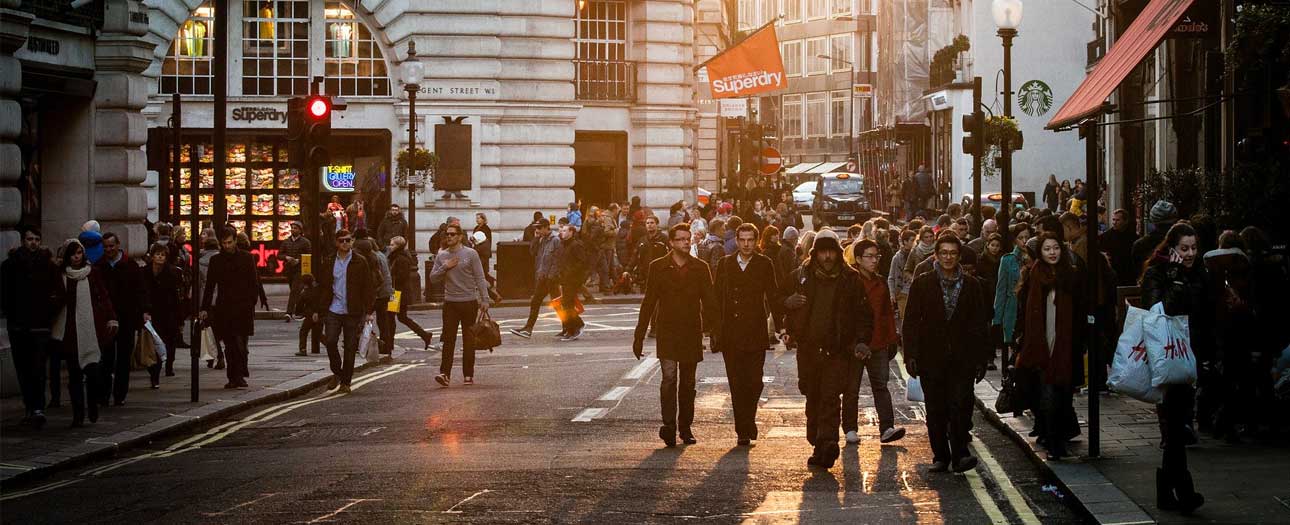
While a lot of places have footpaths for pedestrians to use if there isn’t one available then they are entitled to walk in the road.
You should be vigilant for pedestrians as they are usually the slowest moving and have the least protection if involved in an accident. We advise being especially aware that they may be present on roads where there is no available footpath for them to use.
The Highway Code does address how pedestrians, and other non-car road users, should behave on the road and it’s important that you know these rules as they will help you know the best practices for driving near them.
If there is a pavement available then they should be using this, but if not then they are advised to walk on the right-hand side of the road so that they can see the approaching traffic and act appropriately. There is an exemption to this for large organised groups who should walk on the left-hand side of the road. Additionally, you may find that when pedestrians are going around a corner they may walk on the outside edge of the bend in order to be as visible as possible to vehicles, even if this does mean going onto the left-hand side for the duration of the corner.
Whilst it is recommended that all pedestrians wear light, bright or florescent clothing to help make them more visible to you not all will do so. So it’s important that you know they may be inappropriately dressed and harder to spot.
Where there are pathways then pedestrians are advised to cross the road via designated crossings. We’ve got more information on the types of crossing there are and how you need to act as a driver further down.
Five Tips for Driving Around Pedestrians
1. Go slowly when passing pedestrians and give them plenty of space. We recommend around a metre and a half to two metres of space and traveling around 10 - 20 30 mph speed.
2. Observe all crossing rules, especially not blocking them when in queuing traffic.
3. Go slower in highly pedestrianised areas, such as around a school, where there are likely to be a lot of people and they might not adhere to regular crossings.
4. Watch out for pedestrians around bus stops and stationary vehicles, they might choose to cross at places where there is not an official crossing and parked vehicles can make them harder to spot.
5. Take the weather into account – if it’s overcast then pedestrians may be harder to spot and if it’s wet you need to slow down to avoid splashing them.
Horse Riders
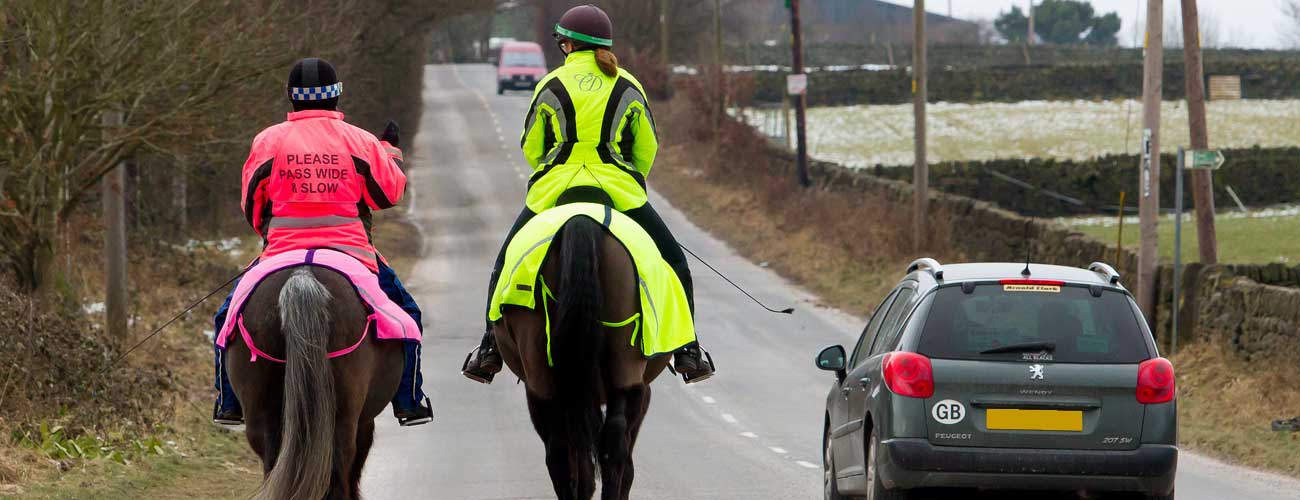
Another non-vehicle road user you’re likely to encounter is a horse rider.
Horse riders are not allowed to travel on a path unless it is a bridleway, and these are usually not the paths that run alongside a road. This means that they will usually be on the road that you are also travelling on, they’ll travel on the left-hand side with the flow of the traffic.
If there are a group of riders they will usually travel in single file when traffic needs to overtake them, however they are allowed to travel two abreast and if one rider or horse is inexperienced in road riding then they may remain two abreast in order to prevent the less experienced horse / rider from being spooked.
All horse riders should be wearing a helmet to help protect them and high-vis clothing or a piece of tack to make them easier to spot when travelling on the road.
Five Tips for Driving Around Horse Riders
1. Slow right down. Until you are able to overtake the riders you should slow right down to their speed and give them plenty of space so they don’t get spooked by your closeness and you have time to react if they stop.
2. Just like pedestrians you want to give horse riders plenty of room (the highway code advises a distance of 2 metres) and travel at lower speeds when you are overtaking them.
3. Accelerate gently once you are past the vehicle to avoid revving and spooking the animal with the engine noise.
4. Turn down your radio and avoid making any loud noises with the vehicle, such as revving the engine, these can startle the animal and cause it to act in a dangerous manner.
5. Look out for hand movements if you are following behind a horse rider. They do not have indicators so they will use their arms to indicate their intention of turning.
Scooter and Mobility Scooter Users
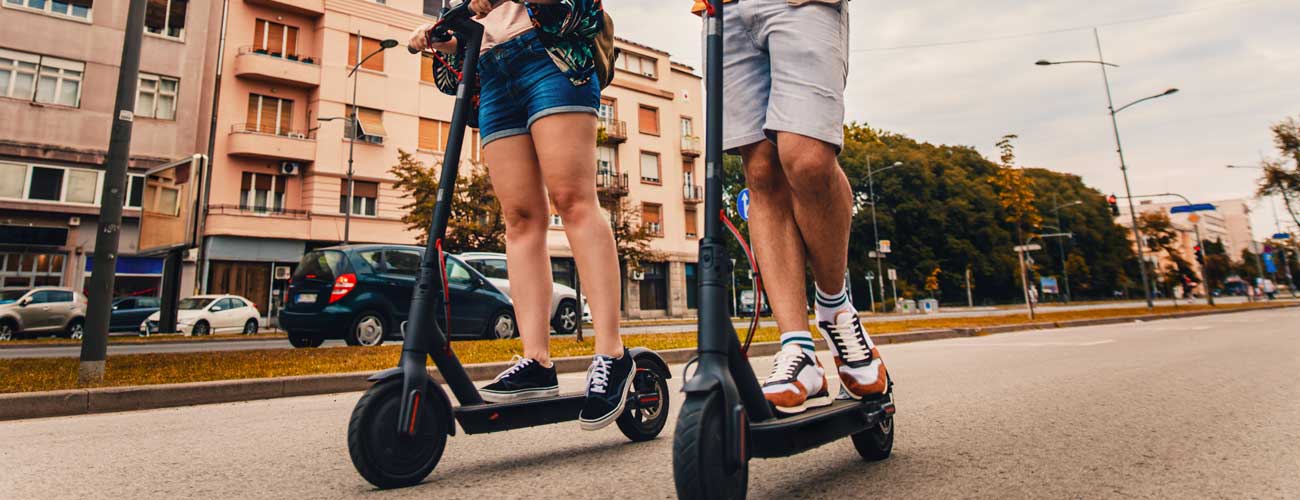
In recent years many counties have introduced electric scooters for their communities to use. The speed of electric scooters means that they are not safe for using on footpaths so will be used on the road.
Additionally, some of the modern motorised mobility scooters also travel too fast to be safe on the road and so they might be used on the road.
Scooter users will travel in the same direction as the traffic and try to keep to the left-hand side of the lane unless they are turning.
Five Tips for Driving Around Scooters
1. Watch out for them weaving in the road, they may pull out slightly further into the road to avoid potholes or other hazards on the tarmac.
2. Travel slowly behind them – remember they have a top speed of around 15 mph and most will not reach this so you need to slow down in advance when you see one on the road.
3. Give them plenty of room when overtaking. Again, the standard metre and a half would be the best practice as it reduces the chance of your backdraft knocking them over.
4. Be wary of them entering and exiting the road at odd points. Though they may not be legally allowed to scoot on the pavement many will jump on and of the pavement for shortcuts or when they reach their intended destination.
5. Look out for them turning. Again scooters do not come with indicators however the rider might not always be able to give a hand gesture as both hands are needed to steer and balance the scooter.
Cyclists
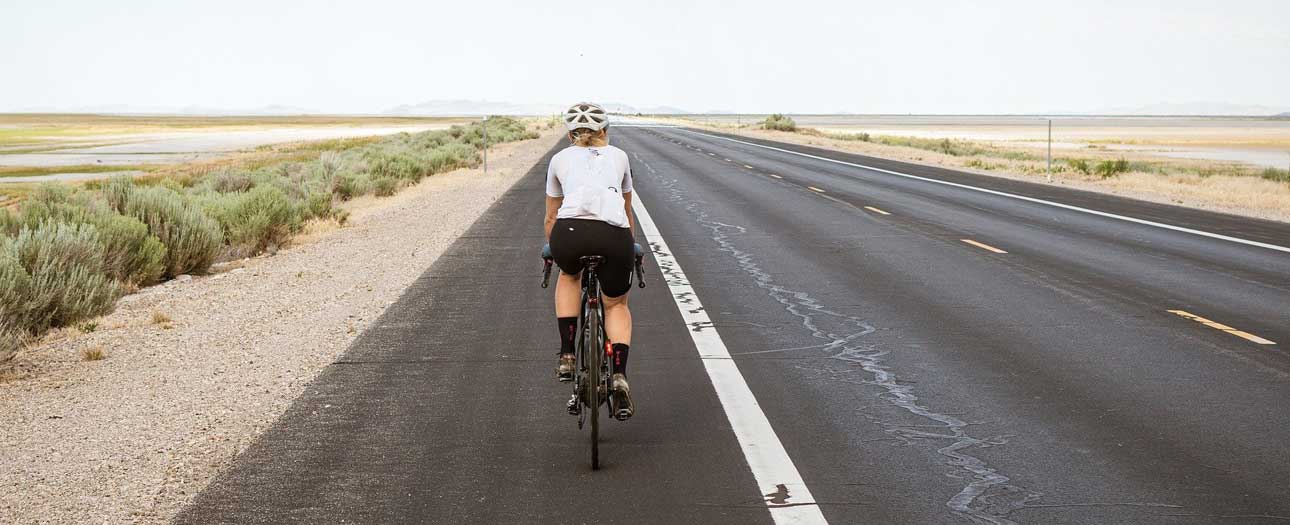
More and more towns and cities around the country are introducing cycle lanes, however where there is not a cycle lane available all cyclists should ride on the road and not the footpath.
Recent changes to the highway code are important to be aware of as they have given cyclists more rights and you need to be more careful when driving around cyclists. These changes, introduced at the start of the year, mean that cyclists no longer need to keep left and are instead to advise to sit in the middle of the lane unless in a high traffic area. This is to make them more visible to other road users and to prevent them from falling due to uneven road surface at the edge of the lane.
The distance you need to give to a cyclist when passing has also increased to a minimum of one and a half metres.
Cyclists should have red reflectors on the rear of their vehicle, and amber ones on their pedals, and they should use lights when travelling at night to make them more visible to other road users. Like other vehicles, bicycles will need a red light at the rear and a white light at the front.
If you park on the road, then you should look for cyclists before opening your door as they are less noticeable than a car and you could knock them from their bike. You should also be careful not to park over any cycle lanes as this causes a major hazard to them and can cause a problem for other cars travelling on the road as cyclists have to come into the main flow of traffic in order to get around you.
Five Tips for Driving Near Cyclists
1. Respect cycle lanes and boxes and do not use them. These are not for any other road user and using them causes a hazard to other road users.
2. Give them plenty of room when travelling behind them or overtaking. As mentioned earlier you’re obligated to give them at least a metre and a half.
3. Watch out for hand signals. Just as we’ve mentioned with horse riders and scooter users cyclists will use hand gestures to indicate turning.
4. Be careful at roundabouts. Cyclists will stay to the left even if they are taking the third exit, this is safer for them and other road users then crossing to the centre of the roundabout and back. You should look for their hand signals and give them plenty of space.
5. Always double check your mirrors and blind spot for any cyclists when executing manoeuvres as they are smaller and harder to spot than larger vehicles.
Motor Cyclists
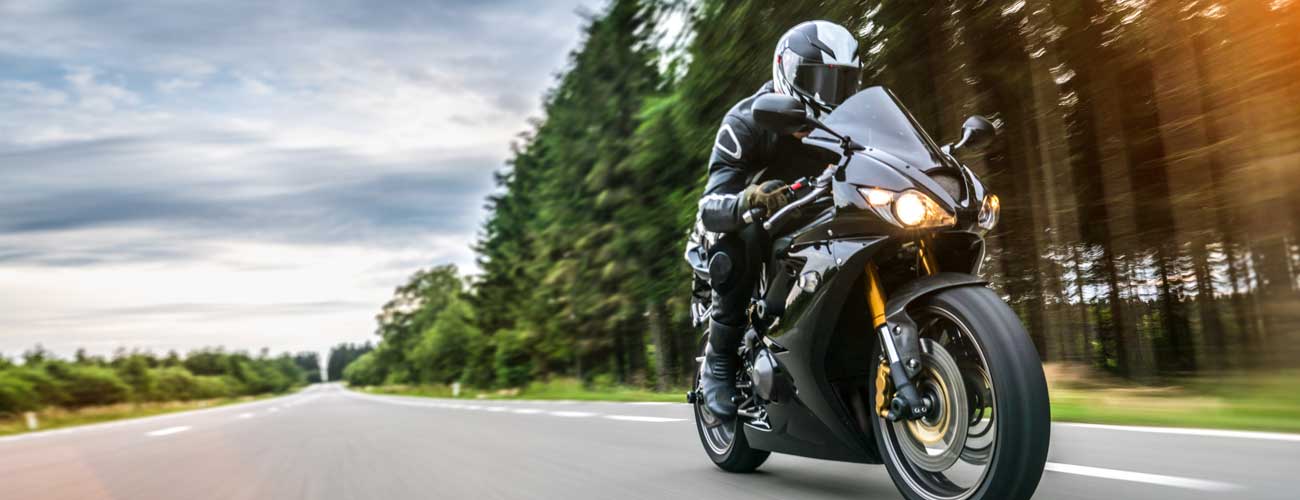
Motorbikes and mopeds are fairly common on UK roads so most drivers will know the best ways to act around them.
Although they are motorised vehicles they will act slightly differently to cars and larger vehicles due to their size. One of the major selling points of a motorbike is that they are small and nippy, so able to move around traffic in busy locations or when there are queues and on less busy roads they can travel at faster speeds. This makes them much more likely to overtake than other road users.
Five Tips for Driving Around Motor Cyclists
1. Always double check your mirrors and blind spots for them when completing any manoeuvres as they are smaller and faster than other road users so can be harder to spot but more of a potential hazard than larger slow-moving vehicles.
2. Give them space if they are overtaking or weaving between slow traffic, they might not always be in the right but pulling to the left of your lane will give them room and be safer for all involved.
3. Watch out for their indicators, as a motorbike is a smaller vehicle their lights will be much smaller too which makes them harder to spot. Some less powerful and older mopeds might not have indicators and instead have to use the hand signals that other road users do.
4. Be wary of the weather. Wet and windy weather makes it much harder for motorcyclists to control their vehicles and so you should allow them extra room in poor weather.
5. Look out for them at night, because of their size and smaller lights they will be less noticeable than larger vehicles.
Vans and Small Truck Drivers
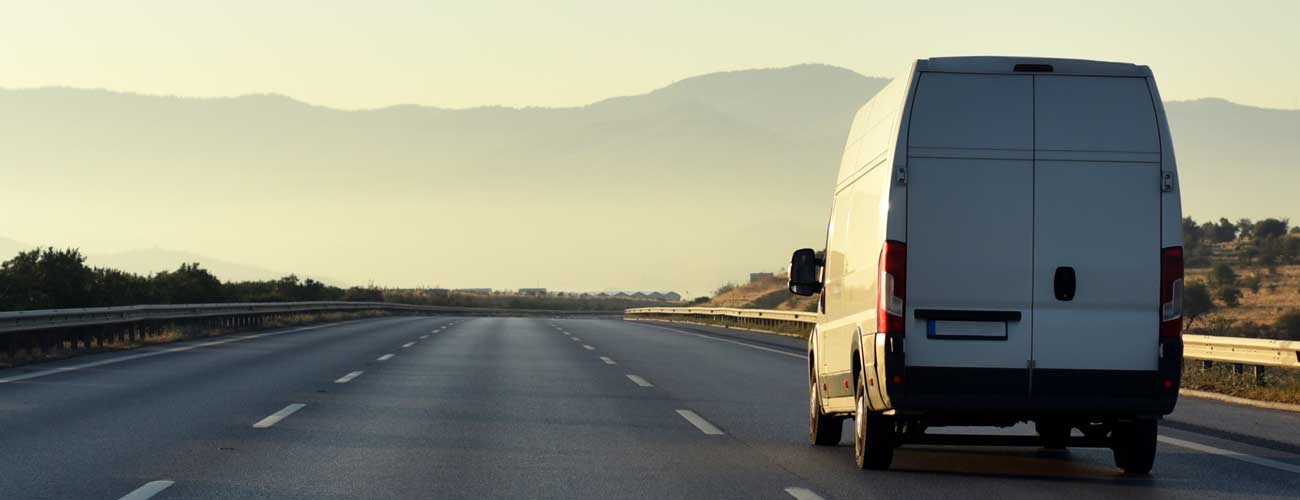
It’s not just smaller road users that you should know how to drive around though. You should also be aware of how to drive around larger vehicles that will be on the road.
Vans and small trucks aren’t the largest road users but they can be substantially larger than cars and so behave in a different way from a car. Because of their size, they may have a slightly wider turning circle so need to be over the line at roundabouts.
Vans and trucks are larger, heavier vehicles and this is especially true when they have a full cargo load so you need to be aware that they might not act in the same way a car would on the road and be travelling at slower speeds. Additionally, some may be fitted with speed restrictors which means they cannot travel as fast as the speed limit.
Five Tips for Driving Around Vans
1. Be aware that their driving position is higher than most cars and so their blind spots will also be a little different to yours. If they are performing a manoeuvre then we recommend giving them plenty of room as they may not see you.
2. They may have a lot of cargo in the back which makes them heavier vehicles. Be prepared for them to go slowly, especially on hills.
3. Watch out for strapping. Some vans will also have external racking on a side panel or the roof to carry goods, though everything should be secured to the vehicle you should be wary of any becoming loose. Additionally, they will affect the weight of the vehicle and you may find they behave unexpectedly, especially on corners.
4. Additionally, they may be on a delivery route and stop at drop off points with little warning and without pulling off of the road. We recommend allowing them a little more room than you usually would a car on the road, so you have time to react if they do stop unexpectedly in the road.
5. If a van is stopped and looks to be unloading look out for people moving around the vehicle. Some vans have side-opening doors and so they might be unloading goods from an unexpected part of the vehicle.
Lorries
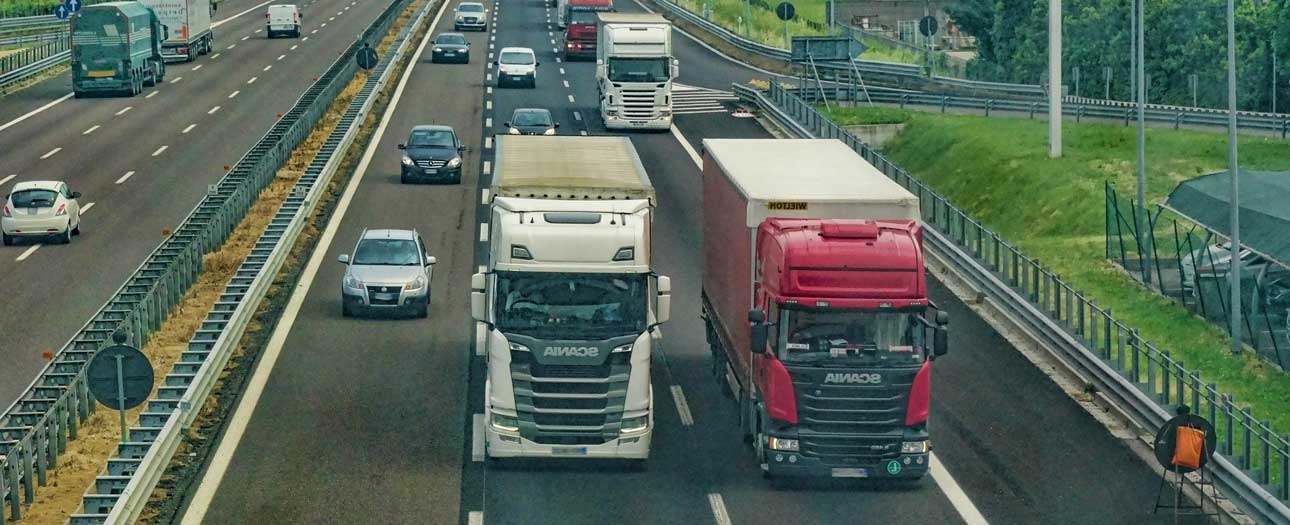
One of the largest vehicles you will encounter on the road is lorries.
They will behave similarly to the vans and small trucks we’ve just covered but on a larger scale. Their turning circles are much larger than a car’s and so they will often sit in the left lane at a roundabout, or straddle two lanes, when they are turning right.
Another thing to be aware of is that because of their large size it is harder for the driver to spot you when close to them, especially to the side of them, and harder for you to see around them when on the road.
Five Tips for Driving Around Lorries
1. Be aware of their blind spots as these are much larger than the blind spot in your car.
2. Give them extra room, especially in areas that they need to turn in such as a junction or roundabout. They have a larger turning circle and so will need to take up a wider strip of the road and will not fit neatly into the curved lanes designed for cars at points.
3. Be prepared to go slow. Lorries are heavy vehicles when they are empty so when you add in a cargo hold full they move at a much slower pace than your average car. This is especially true when going uphill where more power is needed. We recommend slowing down in advance if you are following a lorry and be prepared to go slower on inclines.
4. Look out for left-hand drive models. A lot of lorries being driven in the UK are from other European countries where they drive on the other side of the road which means that they will have a different viewpoint of the road and unexpected blind spots.
5. Leave a wider gap between you and the lorry ahead if you are following behind one to give yourself better road visibility. Because of the size of them, lorries block a lot of your view of the road and pulling back a little further will let you see further ahead. Better visibility also means that you can see when it is safe to overtake the lorry if you want to as well.
Buses
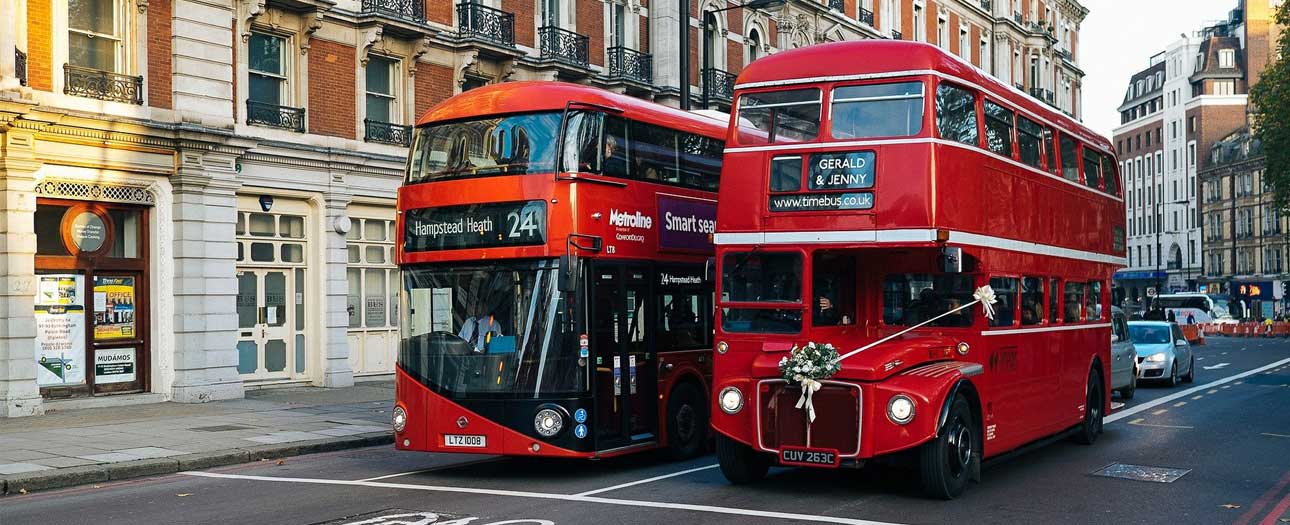
The other larger vehicle you’ll encounter on the road is a bus.
They are an essential part of the public transport network and will usually carry many passengers following a particular route that is marked by stops along the route. However, you might find that some buses such as school buses and minibuses will stop at different places based on where their passengers need to get off.
As well as the buses themselves you need to be wary of the way that the road is adapted for them. For example, many towns have bus lanes that you are not allowed to drive in if you are not a bus or other authorised vehicle. Some will be operational 24/7 and some will have operating hours so you can use them outside of these times.
Five Tips for Driving Around Buses
1. Watch out for passengers. If a bus is stopped or has recently stopped at a bus stop then you should be careful of its passengers crossing the road around it. They may not always go to a road crossing and the bus can stop you from being able to see them.
2. Be prepared for it to stop. Buses follow routes with regular stops and you should be wary of them stopping even if there is nobody waiting there, passengers may want to get off or the bus may need to wait for the timetabled departure time if it is ahead of schedule.
3. Be patient if it is travelling at slower speeds. Passengers do not wear seatbelts and can move about the bus when approaching a bus stop so drivers will not always travel at the speed limit, especially on faster roads.
4. Don’t use bus lanes unless it is outside of its operating hours. You can be fined and could be a hazard to other road users when re-entering the main flow of traffic.
5. Don’t ever stop in a bus stop, you may prevent a bus from being able to use the location and create a hazard to them and other road users.
Tractors
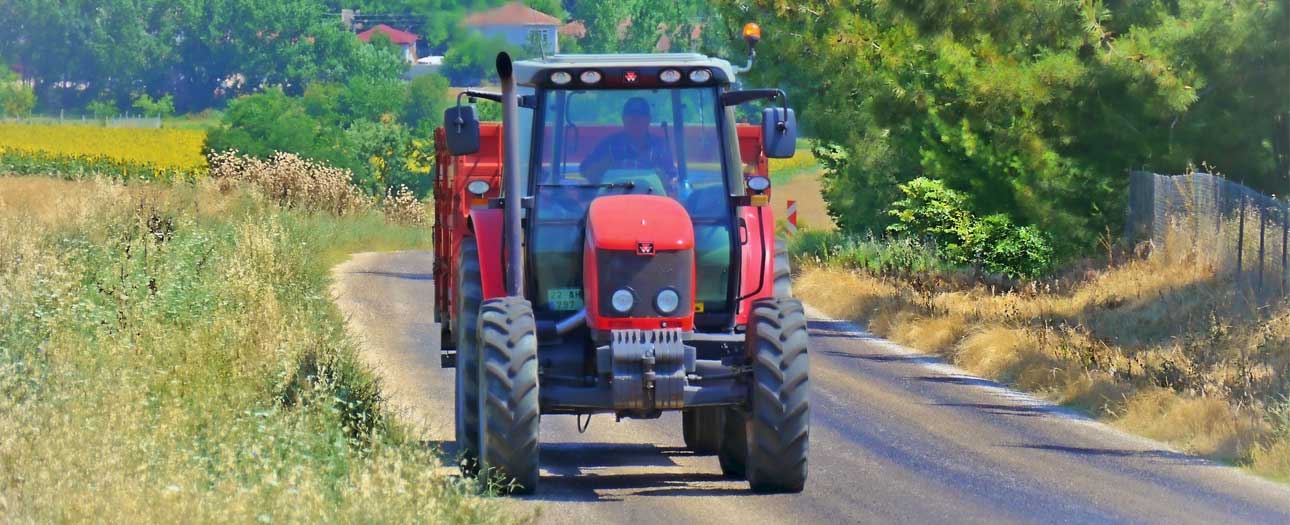
While you usually see tractors in the fields they can drive on the road and will do so to move between farmlands.
Tractors are motor vehicles so follow a lot of the same rules that cars do when on the road with a few differences. For example, as they are slow-moving vehicles it is recommended that when a queue of cars builds up behind them, they pull off into a safe location to allow other vehicles to pass by them.
Five Tips for Driving Around Tractors
1. Be prepared to go slowly. Most tractors have a top speed of around 25-30 mph and so no matter what the speed limit is on the road this will be the fastest they can travel.
2. Don’t overtake if you don’t have a clear sight of the road ahead, while it might be tempting to speed past a tractor because of the size of them you’ll need to pull back a little bit in order to see the road behind them.
3. Tractors might be trailering additional equipment making them slower and more cautious. This equipment might also mean they need to take a wider turning path so we advise giving them extra time and space if they are towing equipment.
4. Some models of tractors will not have indicators on them. If this is the case the driver should use the hand signals other road users will use so you should look out for these as well if you cannot see any indicator lights.
5. Tractors are wide vehicles, this means that they will take up more of the road and may need to pull further into the other lane when turning or performing manoeuvres. We advise giving them plenty of room when they are at a junction or roundabout in order to avoid becoming a hazard.
What is the Road Hierarchy?
There have been recent changes to the Highway Code which means that the road hierarchy, who has priority when, has changed. These changes mean that the road user which is capable of inflicting the most damage bears the greater responsibility to ensure the safety of other road users.
This means that drivers will need to give way to pedestrians, horse riders, cyclists and motor cyclists as your car has the potential to inflict the greatest harm. While buses, lorries and vans will need to be more considerate of you.
One specific change you need to know due to the updated Highway Code is that you will now need to give way to pedestrians in more situations. If they are waiting to cross the road then you should now stop and let them cross even if you are turning into a road that they are wanting to cross.
Understanding Road Crossings
There are several different types of road crossings you should know about which are:
- Zebra Crossings
- Tiger Crossings
- Pelican Crossings
- Puffin Crossings
- Toucan Crossings
- Pegasus Crossings
We’ll give you a brief description of these and how they work below but for more information you should look at the Highway Code.
Zebra Crossings
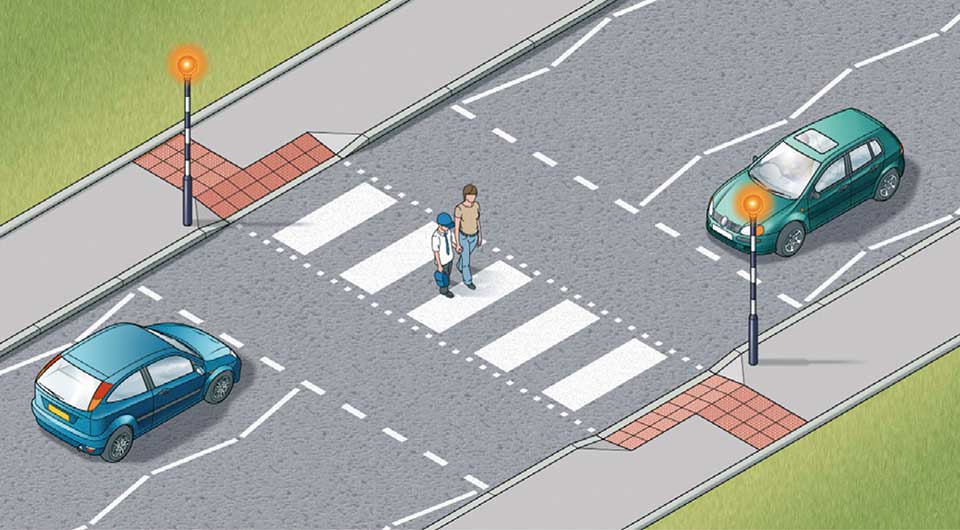
Image sourced: https://www.gov.uk/guidance/the-highway-code/rules-for-pedestrians-1-to-35
A zebra crossing does not have traffic lights but is marked by beacon lights on either side of the crossing and large white lines that cross the road to create a zebra-like pattern of stripes.
Pedestrians have the right of way at these crossings, and you should always stop and allow them to cross.
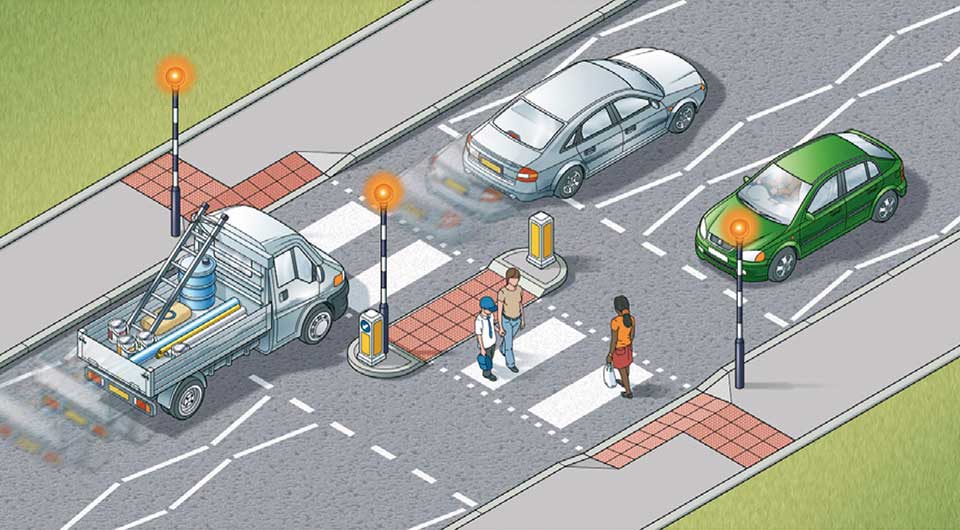
Image sourced: https://www.gov.uk/guidance/the-highway-code/rules-for-pedestrians-1-to-35
If there is an island in the middle of the crossing then this turns it into two crossings and you only need to stop if there is a pedestrian approaching the crossing over your lane.
Tiger Crossings
A tiger crossing is very similar to a zebra crossing but it has a cycle lane over the crossing as well. This gives approaching cyclists the same rights as pedestrians crossing the road.
Pelican Crossings
A pelican crossing is a crossing with traffic lights that are operated by the pedestrian who pushes a button when they want to cross. This will then turn the traffic lights from green to red for the drivers and they will be able to cross safely.
You must stop when a red light shows for you, and if it is an amber light and a pedestrian is crossing then you will need to stop until they are safely over the road.
When approaching a pelican crossing you should look out for any waiting pedestrians as this could indicate the traffic lights are about to change, and if the signal is on amber then you should prepare to stop and not speed up to try and get through it.
Puffin Crossings
Puffin crossings are essentially the same as pelican crossings for the driver in fact you will usually not be able to tell the difference from the driver’s seat.
The difference between them is the position of the signals for the pedestrian as they will be on the other side of the road in a pelican crossing but below the button that you push on the same side of the road to them.
Again you must stop when a red light shows for you, and if it is an amber light and a pedestrian is crossing then you will need to stop until they are safely over the road.
When approaching a pelican crossing you should look out for any waiting pedestrians as this could indicate the traffic lights are about to change, and if the signal is on amber then you should prepare to stop and not speed up to try and get through it.
Staggered Pelican and Puffin Crossings
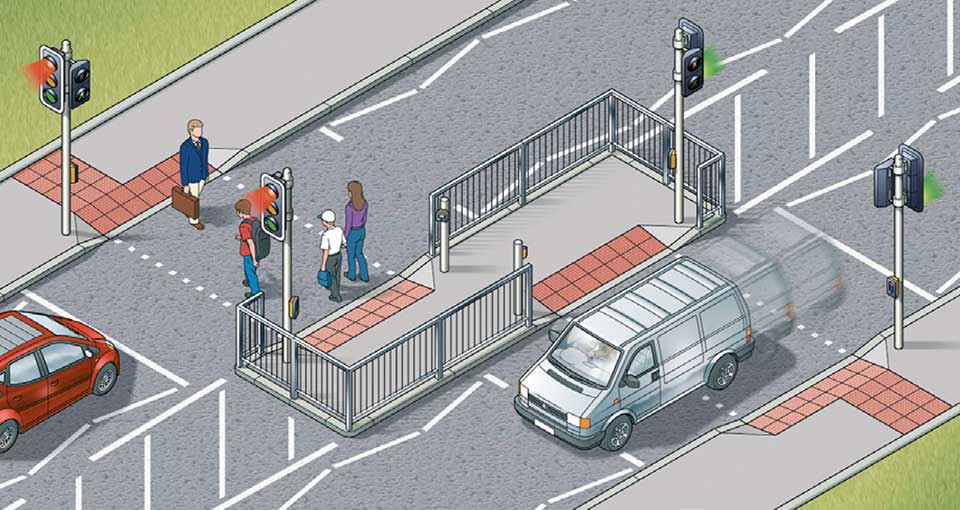
Image sourced: https://www.gov.uk/guidance/the-highway-code/rules-for-pedestrians-1-to-35
Staggered pelican or puffin crossings operate in the same way as regular ones, however instead of crossing the full width of the road in one go there will be multiple crossings staggered with a central refuge in between them.
This means that you only need to stop for the light across your lane of traffic. If someone is crossing on the other side of the road, then you will not need to stop unless your light is also red or amber.
Toucan Crossings
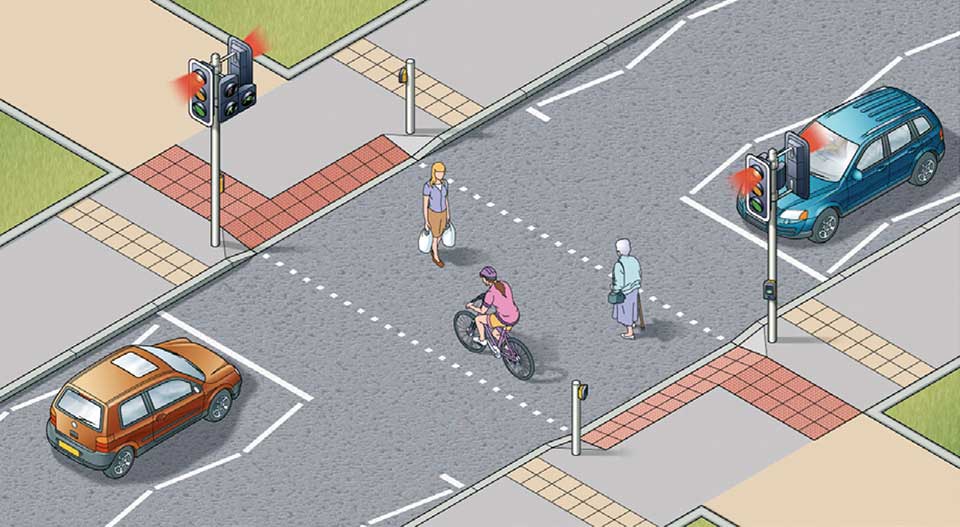
Image sourced: https://www.gov.uk/guidance/the-highway-code/rules-for-pedestrians-1-to-35
Toucan crossings are very similar to pelican and puffin crossings but they are also designed to allow cyclists to cross the road and you’ll usually find them in areas with a lot of cycle lanes and tracks.
They work in the same way and are operated by the pedestrian or cyclist pushing a button to change the traffic signal.
You will need to stop for a red light and if there is an amber light then you should also slow down and prepare to stop for the user to cross.
Pegasus Crossings
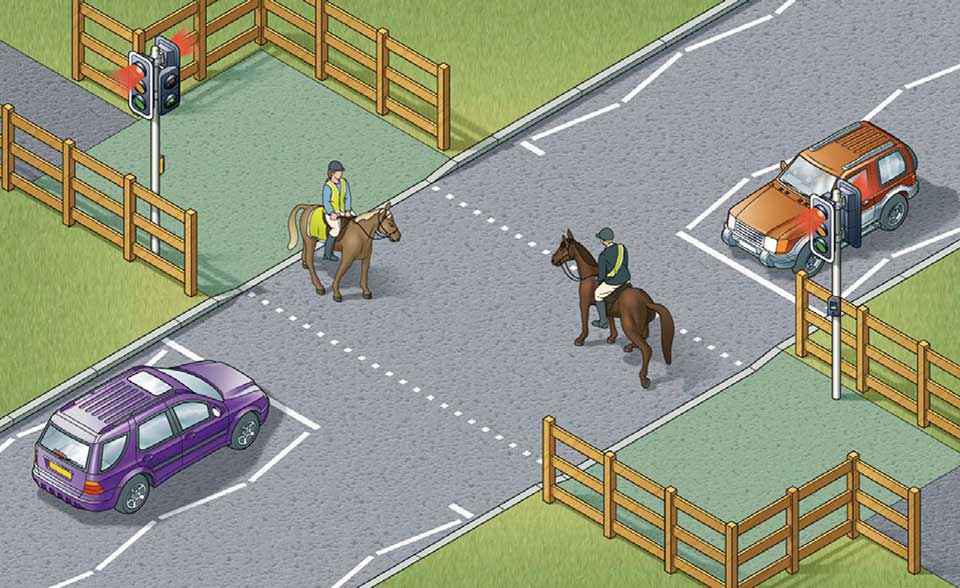
Image sourced: https://www.gov.uk/guidance/the-highway-code/rules-for-pedestrians-1-to-35
Also known as an equestrian crossing, the Pegasus crossing is designed for horse riders to also cross the road when riding on a bridleway.
They have pavement barriers, a wider crossing space and additional controls that are positioned slightly higher so that they can use them without dismounting.
These are signal operated traffic lights, and you should behave as you would with pelican, puffin and toucan crossings. Because these lights are also used by horse riders there are a few extra steps you want to take.
You should accelerate slowly when approaching, crossing and leaving these crossings so not to spook any animals that are near or on the crossing. You’ll also want to turn down your music so the loud noise does not upset them.
Understanding Hand Gestures
We’ve mentioned a few times that some road users will use hand signals when changing direction as they do not have electronic indicators and wanted to show what these signals look like so you can recognise them when you see them.
The below images show a motorcyclist but these are the same signals that cyclists, scooter users and horse riders use as well.
Turning Left
.jpg)
Image sourced: https://www.gov.uk/guidance/the-highway-code/signals-to-other-road-users
Turning Right
.jpg)
Image sourced: https://www.gov.uk/guidance/the-highway-code/signals-to-other-road-users
Slowing Down
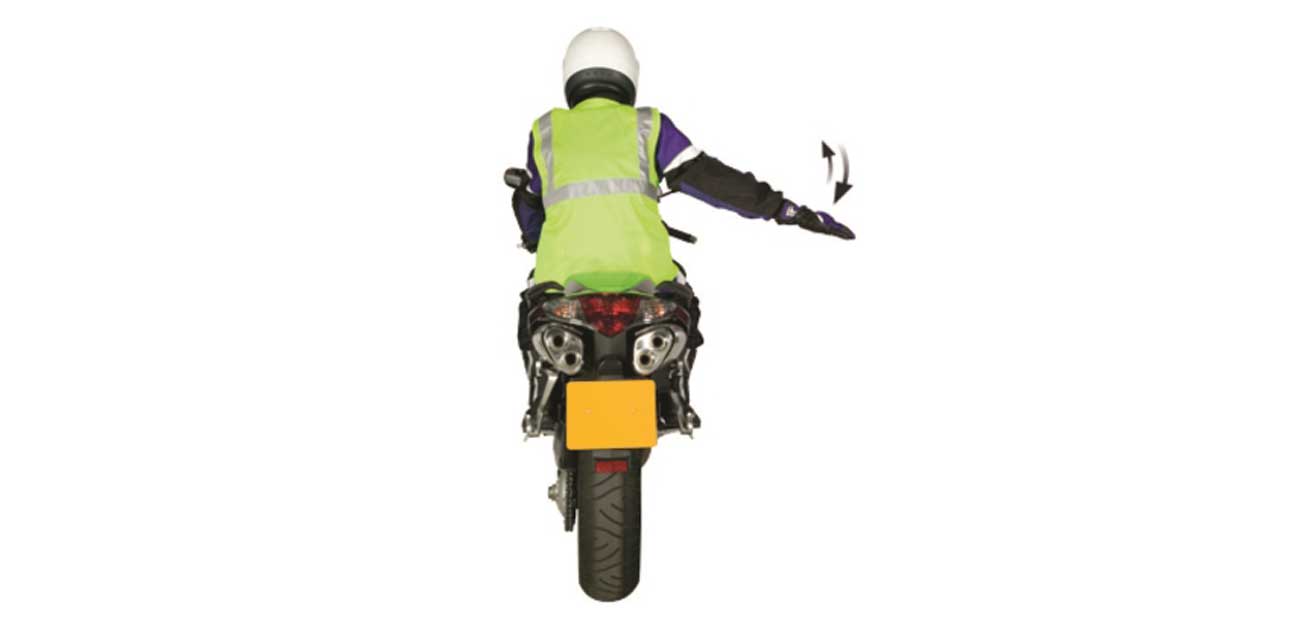
Image sourced: https://www.gov.uk/guidance/the-highway-code/signals-to-other-road-users
Enjoyed this article? Read more of our latest blogs below:
- The Best and Worst UK Cities for Driving
- 10 Essentials to Keep in Your Car
- What Happens at the End of a Lease
- How Long Will My New Car Take to Arrive
Want to know more about car leasing?
For all our latest news and blogs click HERE.
Or are you looking to understand the company car, fleet management or any other aspect of fleet vehicles? If so, then check out our Guide Pages.
